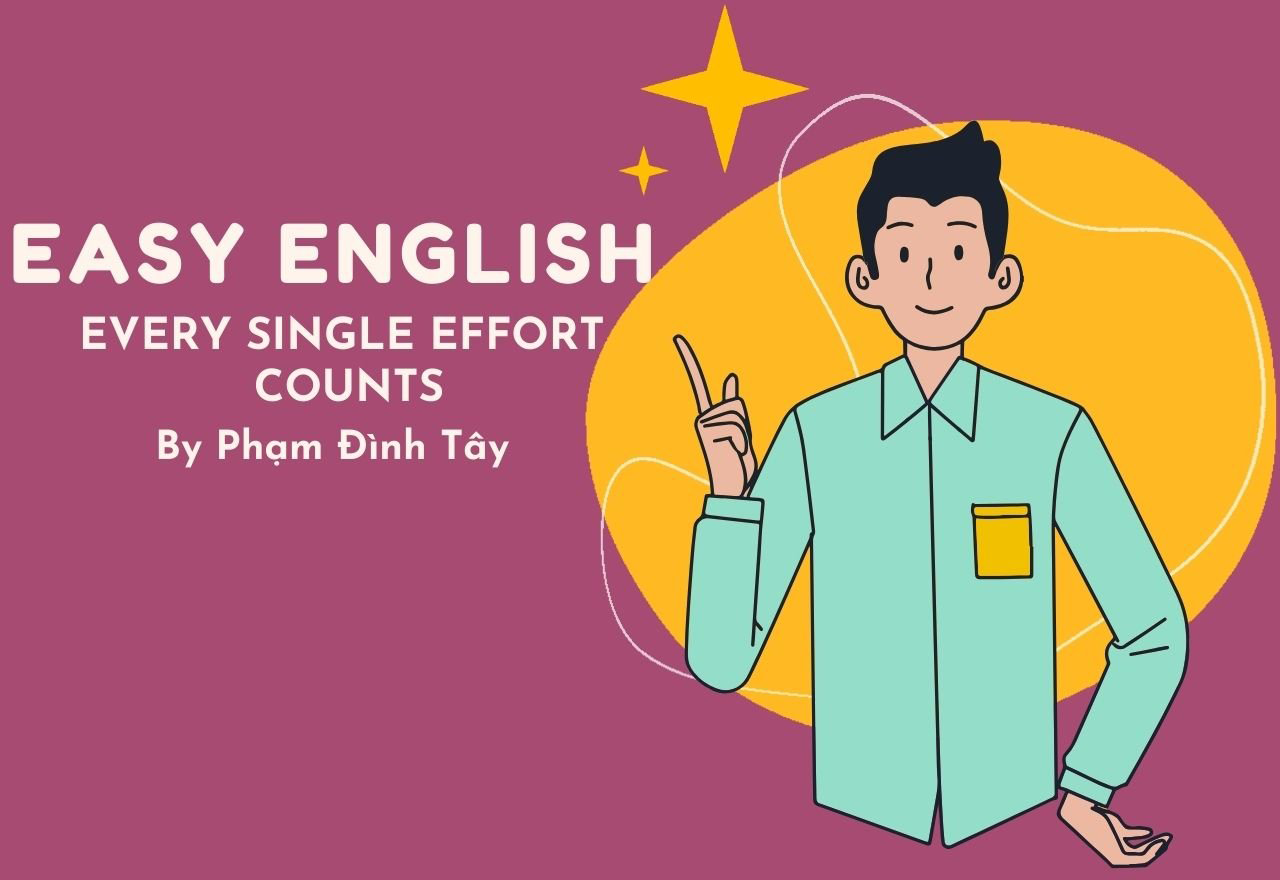Let's CelebrateIn many places, a new year begins on January 1. Here is how four countries celebrate. Do you have any New Year’s traditions? |
Hãy cùng ăn mừngỞ nhiều nơi, năm mới bắt đầu vào ngày 1 tháng 1. Sau đây là cách bốn quốc gia ăn mừng. Bạn có truyền thống năm mới nào không?
|
|
In Spain, they eat grapes. At midnight, the clock chimes 12 times. The Spanish eat one grape at each chime. They believe it is good luck. |
Ở Tây Ban Nha, họ ăn nho.Vào nửa đêm, đồng hồ sẽ đổ chuông 12 lần. Người Tây Ban Nha ăn một quả nho mỗi lần đổ chuông. Họ tin rằng đó là may mắn.
|
|
Germans eat candy pigs.These pigs are sweet treats. Each wears a four-leaf clover. The pigs and clovers are both for good luck. |
Người Đức ăn kẹo hình con heo.Những chú heo này là những món ăn ngọt ngào. Mỗi chú đều đeo một chiếc cỏ bốn lá. Cả lợn và cỏ ba lá đều tượng trưng cho may mắn. |
|
In the Philippines, children jump.Three, two, one: Jump! When the clock strikes 12, kids jump up. This is believed to make them taller. |
Ở Philippines, trẻ em thường nhảy.Ba, hai, một: Nhảy! Khi đồng hồ điểm 12 giờ, trẻ em nhảy lên. Người ta tin rằng điều này sẽ giúp chúng cao hơn. |
|
First-footing is a tradition in Scotland.Who will be the first visitor to your home in the new year? A dark-haired man is said to bring good luck. |
Phong tục người xông đất là một truyền thống ở Scotland.Ai sẽ là vị khách đầu tiên đến nhà bạn vào năm mới? Người ta cho rằng một người đàn ông tóc đen sẽ mang lại may mắn. |
Vocabulary List
-
Celebrate (verb) /ˈsɛl.əˌbreɪt/: To mark a special occasion or event with enjoyable activities.
- Vietnamese: Ăn mừng
- Example: People around the world celebrate New Year's Eve in unique ways.
-
Tradition (noun) /trəˈdɪʃ.ən/: A custom or belief passed down through generations.
- Vietnamese: Truyền thống
- Example: Each culture has its own unique traditions for celebrating the new year.
-
Spain (noun) /speɪn/: A country in southwestern Europe.
- Vietnamese: Tây Ban Nha
- Example: In Spain, eating grapes at midnight is a New Year's tradition.
-
The Spanish (adjective) /ˈspæn.ɪʃ/: Related to Spain or its language and culture.
- Vietnamese: người Tây Ban Nha
- Example: The Spanish custom of eating 12 grapes symbolizes good luck.
-
Grape (noun) /ɡreɪp/: A small round fruit, often used to make wine.
- Vietnamese: Nho
- Example: Eating grapes at midnight is believed to bring good luck.
-
At midnight (phrase) /ət ˈmɪdˌnaɪt/: Exactly 12:00 AM, marking the transition to a new day.
- Vietnamese: Lúc nửa đêm
- Example: People eat 12 grapes at midnight on New Year’s Eve.
-
Clock (noun) /klɒk/: A device for measuring and showing time.
- Vietnamese: Đồng hồ
- Example: The clock struck midnight as everyone celebrated.
-
Chime (verb) /tʃaɪm/: To make a ringing sound, typically from a clock or bell.
- Vietnamese: Kêu vang
- Example: The clock chimed 12 times to welcome the New Year.
-
Time (noun) /taɪm/: The frequency of doing something.
- Vietnamese: số lần
- Example: The clock chimed 12 times to welcome the New Year.
-
Good luck (phrase) /ɡʊd lʌk/: Success or fortune.
- Vietnamese: May mắn
- Example: Eating 12 grapes is believed to bring good luck.
-
Germany (noun) /ˈdʒɜː.mə.ni/: A country in central Europe.
- Vietnamese: Đức
- Example: In Germany, people celebrate with candy and fireworks.
-
Germans (noun) /ˈdʒɜː.mənz/: People from Germany.
- Vietnamese: Người Đức
- Example: Germans have unique customs for New Year celebrations.
-
Candy (noun) /ˈkæn.di/: A sweet treat made with sugar or chocolate.
- Vietnamese: Kẹo
- Example: Children in Germany enjoy candy during celebrations.
-
Sweet (adjective) /swiːt/: Having a sugary taste.
- Vietnamese: Ngọt
- Example: Germans often eat sweet treats like candy on New Year's Eve.
-
Wear (verb) /weə(r)/: To have clothing or accessories on the body.
- Vietnamese: Mặc, đeo
- Example: People wear special outfits to celebrate the New Year.
-
Four-leaf clover (noun) /ˌfɔːr ˌliːf ˈkləʊ.vər/: A plant symbolizing good luck.
- Vietnamese: Cỏ bốn lá
- Example: A four-leaf clover is considered lucky in many cultures.
-
The Philippines (noun) /ðə ˈfɪl.ɪˌpiːnz/: A Southeast Asian country made up of islands.
- Vietnamese: Nước Phi-líp-pin
- Example: In the Philippines, people jump at midnight for good fortune.
-
Jump (verb) /dʒʌmp/: To push oneself off the ground using one’s legs.
- Vietnamese: Nhảy
- Example: People jump when the clock strikes midnight to grow taller.
-
Strike (in time) (verb) /straɪk/: To indicate the time by making a sound, usually a bell or clock.
- Vietnamese: Điểm / chỉ (giờ)
- Example: When the clock strikes midnight, the celebrations begin.
-
Tall / Taller (adjective) /tɔːl/ /ˈtɔː.lər/: Having a greater height.
- Vietnamese: Cao / Cao hơn
- Example: Jumping at midnight is said to help children grow taller.
-
First-footing (noun) /ˈfɜːst ˌfʊt.ɪŋ/: A Scottish tradition where the first person to enter a home in the New Year brings luck.
- Vietnamese: Phong tục người xông đất
- Example: First-footing is a cherished custom in Scotland.
-
Scotland (noun) /ˈskɒt.lənd/: A country in the United Kingdom.
- Vietnamese: Nước Xì-cốt len
- Example: Scotland has many unique New Year traditions.
-
Scottish (noun) /ˈskɒt.lənd/: People living in Scotland.
- Vietnamese: Người Xì-cốt len
- Example: The Scottish have a special tradition called first-footing.
-
Visitor (noun) /ˈvɪz.ɪ.tər/: Someone who visits a place.
- Vietnamese: Khách đến chơi
- Example: The first visitor of the year is believed to bring good fortune.
-
Dark-haired (adjective) /ˌdɑːk ˈheəd/: Having dark-colored hair.
- Vietnamese: Tóc đen
- Example: In first-footing, a dark-haired visitor is considered lucky.
Reviewing Tasks
Task 1: Completion
Complete the sentences with the correct word or phrase from the list.
Word Bank: celebrate, tradition, Spain, midnight, chime, first-footing, good luck, dark-haired, strike, tall, visitor
- People around the world gather to ________ the New Year in unique ways.
- Eating grapes at ________ is a popular custom in Spain.
- The clock will ________ twelve to mark the start of the new year.
- In ________, the tradition of eating 12 grapes symbolizes good luck.
- First-footing is a ________ in Scotland where the first visitor of the year brings fortune.
- A ________ person is considered lucky when they are the first to enter a home in Scotland.
- Jumping at midnight is believed to help children grow ________.
- Many believe that eating grapes can bring ________ for the entire year.
- A ________ enters the house during the first-footing ceremony.
- The clock’s ________ marks the beginning of celebrations.
Task 2: Word Form
Write the correct form of the word in parentheses to complete the sentences.
- Wearing a four-leaf clover is considered a symbol of ________ (luck).
- The ________ (Scotland) custom of first-footing is both unique and interesting.
- People in the Philippines jump at midnight to bring ________ (tall).
- Eating grapes during the New Year is an important ________ (traditional) in Spain.
- The clock ________ (strike) twelve as everyone cheered.
Task 3: Synonym Matching
Match the words in Column A with their synonyms or related meanings in Column B.
| Column A | Column B |
|---|---|
| 1. Tradition | A. 12:00 AM |
| 2. Visitor | B. Fortune |
| 3. Good luck | C. Hold a party |
| 4. Midnight | D. Long-timed practices |
| 5. Celebrate | E. Guest |
Task 4: Gap-Fill Paragraph
Fill in the blanks with the correct word or phrase from the box.
Word Bank: Scotland, four-leaf clover, Philippines, candy, good luck, jump, visitor, dark-haired, midnight
In many countries, unique traditions mark the start of a new year. For example, in ________, people participate in first-footing. This custom involves the first ________ of the year, often a ________ person, entering a home to bring ________. Meanwhile, in the ________, children ________ at ________ to grow taller. In Germany, people celebrate with sweets like ________, and in many cultures, wearing a ________ symbolizes prosperity.
Task 5: Multiple Choice
Choose the best answer for each question.
-
What is a "four-leaf clover" a symbol of?
A. Wealth
B. Health
C. Good luck
D. Friendship -
What country is known for the tradition of first-footing?
A. Spain
B. Germany
C. Scotland
D. The Philippines -
In the Philippines, what action is believed to help children grow taller?
A. Eating candy
B. Jumping
C. Planting trees
D. Wearing clovers -
Which word means “12:00 AM”?
A. Chime
B. Visitor
C. Midnight
D. Strike -
In Spain, people eat 12 grapes at midnight to bring:
A. Health
B. Good luck
C. Wealth
D. Strength
Answer Keys
Task 1: Completion
- Celebrate
- Midnight
- Strike
- Spain
- Tradition
- Dark-haired
- Tall
- Good luck
- Visitor
- Chime
Task 2: Word Form
- Luck
- Scottish
- Tallness
- Tradition
- Struck
Task 3: Synonym Matching
- Tradition → D. Long-timed practices
- Visitor → E. Guest
- Good luck → B. Fortune
- Midnight → A. 12:00 AM
- Celebrate → C. Hold a party
Task 4: Gap-Fill Paragraph
- Scotland
- Visitor
- Dark-haired
- Good luck
- Philippines
- Jump
- Midnight
- Candy
- Four-leaf clover
Task 5: Multiple Choice
- C. Good luck
- C. Scotland
- B. Jumping
- C. Midnight
- B. Good luck

